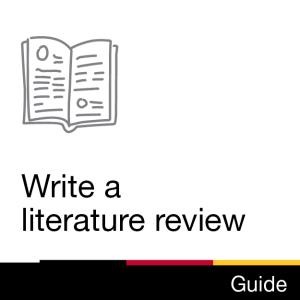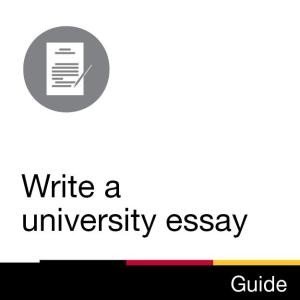Time commitment
2 - 5 minutes
Description
This video provides strategies for gathering information from sources and including that information in writing. These strategies can help students avoid accidental plagiarism.
Video
Transcript
Note-taking and Writing Tips to Avoid Accidental Plagiarism
In this video, we will show you two note-taking techniques and five writing tips to help you avoid accidental plagiarism.
When reading, it is important to develop a consistent note-taking system because 1) it helps you keep organized and 2) when you take good notes of an article, you won’t have to re-read the entire article again to write about it in your Literature Review.
Here are two strategies for note-taking.
One strategy is a single source sheet, which is a good format to use for detailed note-taking.
This single source sheet contains 12 boxes to help you capture different information about each paper you read.
[The front- and back-side of document with the title “Single Source – Note-taking Analysis Worksheet” shows text boxes and white space to enter information.]
These boxes are:
- Source Information with author, title, and citation
- PURPOSE of the article or study
- KEYWORDS and/or key SEARCH TERMS
- BROAD TOPIC area and/or THEMES discussed
- Main ARGUMENT and/or RESEARCH QUESTION(s)
- METHODS used and/or THEORETICAL PERSPECTIVES
- Key FINDINGS and/or CONTRIBUTIONS
- STRENGTHS of the article or study
- LIMITATIONS of the article or study
- RELEVANCE to my research project
- Write a 1-paragraph SUMMARY
- Other RELATED articles or studies
The second strategy is a multiple-source sheet.
[A document with landscape layout shows a table with 10 columns and a header row.]
This table format includes columns for each of the same categories listed in the single source sheet, excluding the 1-paragraph summary and other related articles. This table format allows you to enter all of this information from one article in each row, making it easier to visually compare studies.
We have linked templates for these tools in the description box below.
Customize these templates to collect the information that is most important to you.
This image of a single-source note-taking analysis sheet shows each box filled in with information recorded from an article.
[A single-page document with the title “Single Source – Note-taking Analysis Worksheet has boxes with the categories in black text and the author’s information filled in in blue font. The Methods section is highlighted in yellow.]
This example analysis sheet can be viewed or downloaded from the description box below.
This note-taker has customized the analysis sheet because they wanted to capture more detail in the Methods box. So they added three subsections relevant to their research.
One subsection describes the participants’ characteristics, one explains the intervention, and one details the various measurements taken in the study.
[Text on-screen: Participants: 51 Scottish adults with low veg intake (less than 3 serv/d) were recruited and randomly assigned to the intervention (n = 25) or control groups (n = 26). Intervention: Participants were provided with 480g of vegetables and fruit per week for 12 weeks and were instructed to eat all of it. They were also given cooking and storage instructions. Measures: Measurements were taken at baseline, 4 weeks, 12 weeks and 18 weeks. Measures included 3 day food records to determine vegetable and fruit intake and blood pressure readings by a Sphygmomanometer. An average of 3 blood pressure readings was used.]
Another important box in this worksheet is the one-paragraph summary. You can use this box in multiple ways:
This image here shows an example of a paragraph summary that provides the reader with a snapshot of the article.
[Text on screen: This study did not find that increasing vegetable and fruit intake affected blood pressure in a group of 51 Scottish adults with low vegetable and fruit intake at baseline. Participants were randomized to intervention or control groups. Intervention participants were given 480g of vegetables and fruit every week for 12 weeks. Dietary intake and blood pressure were measured at baseline, 4 weeks, 12 weeks and 18 weeks. While vegetable and fruit intake increased by about 5 servings per day, there was no change in blood pressure.]
Another way to use this box is as a space to reflect on how this article relates to your research.
If you write this paragraph with your research focus in mind, you might be able to insert it directly into your literature review.
Here is an example of a multiple-source worksheet that has been customized.
[A horizontal document with 9 columns and 2 rows, plus a header row.]
This customized example can also be viewed or downloaded from the description box below.
This note-taker added in columns to capture specific information about the research design, sample, intervention goals and length, vegetable intake, and blood pressure.
With these customized columns, the note-taker can more easily compare studies. For example, if we look at the intervention length column, we can easily see that these two studies both have 12-week interventions.
[Highlighted column labeled “Intervention length” includes “12 weeks” as the information in both rows.]
When you are reading, try taking brief notes in your own words and using symbols to indicate patterns, effects, and changes.
[A “not-equal-to" symbol, a triangle, and a greater-than symbol.]
Put the original source out of sight before writing notes in your own words.
Never copy and paste text from a source into your notes, unless you enclose the original wording in quotation marks and include reference information with the author, year, and page numbers.
If you don’t keep track of what is a direct quotation and what is your own writing, you may end up pasting quotations from your notes into your final paper. This is a common cause of accidental plagiarism.
Next, let’s talk about five tips for avoiding accidental plagiarism when writing and revising your literature review.
Tip #1: Minimize the use of quotations. Use your own language in most of the paper and paraphrase instead of relying on quotations.
But even when paraphrasing, remember you still have to cite your sources.
When students use too many quotations, it suggests that they may not understand what they have read.
In this 3-sentence example, this student has used 3 quotations in a row, and very few of their own words.
[Smith (1976) argues, “the tendency to perseverate on a favoured topic is commonly associated with AS behaviours” (4). Whereas, Thomas (1984) claims, “97% of those displaying AS behaviours obsessed about a particular person of interest” (55). However, Aman suggests “these experiences of obsessive fixations on a favoured topic continues into adulthood” (888).]
This is too many quotations, and this paragraph doesn’t show whether the student understands the topic.
Only use quotations when it is important to preserve an author’s original wording.
In this example, Charles Darwin’s thoughts about natural selection are important to keep in his own words.
[In his famous book On the Origin of Species (1859), Charles Darwin wrote, “I am convinced that Natural Selection has been the main but not exclusive means of modification” (page 6).]
In scientific writing, quotations are uncommon and usually limited to definitions and discussion of qualitative research.
Tip #2: Develop your paraphrasing skills.
Ensure you haven’t used more than three words in a row that are the same as those used in your source.
The following example will show you the difference between a poor paraphrase and a good paraphrase.
The original sentence from an article reads “In Alberta, over 50% of youth in the current study were considered inactive.”
An example of a poor paraphrase is “More than 50% of youth in the current study were seen as physically inactive.”
This paraphrase is poor because only a couple of words have been changed to synonyms, the sentence structure is the same as the original, and there are more than 3 words in a row from the original source.
[Red highlighting lines appear under the repeated wording in the two examples: “50% of youth in the current study were...”]
Here is an example of a better paraphrase: “A study of Alberta youth showed that over half of all study participants were inactive.”
This paraphrase is good because it revises the sentence structure and wording without changing the meaning.
However, using common phrases, names, or established terminology is not considered plagiarism.
Poor paraphrasing is especially likely if students don’t have a good understanding of what they are reading, or when students are new to paraphrasing.
This student isn’t sure how to put the information they have read into their own words.
For help with paraphrasing, check out the links to library resources in the description box below.
You can also put your paper through plagiarism detection software, such as TurnItIn, if available, to help you detect any accidental plagiarism.
[Ask your professor if you have access.]
Tip #3: Don’t rely too heavily on a single source.
You are more likely to plagiarize if your work is dependent on a single source.
This student doesn’t know how to add their own analysis or thoughts about the topic to their paper because they feel like the author has said everything.
Tip #4: Save your notes and rough drafts.
That way, you’ll be able to go back and check where your ideas, phrases, and quotations came from.
Tip #5: Cite as you write.
Don’t tell yourself that you’ll cite your sources later. It’s too easy to forget.
[A hand with a pen writes words on paper: Online education is considered to have “grown across the globe” (Oquz, Chus, & Chu, 2018, p. 213).]
Need more help? Make an appointment with Writing Services at the University of Guelph Library.
[A red arrow points to the “Book Appointments” icon on the top of the McLaughlin Library website. On the “What can we help you with?” webpage, an arrow points to the drop-down tab for “Writing, Research Assistance, and English Language Support.”]
Visit lib.uoguelph.ca.
[Questions? Reach out! library@uoguelph.ca]
[Twitter/Instagram: @uglibrary Facebook: /McLaughlinLibrary YouTube: /UoGLibrary]
[This work is licensed under a Creative Commons Attribution-NonCommercial-ShareAlike 4.0 International License.]
Downloads
License

This work is licensed under a Creative Commons Attribution-NonCommercial-ShareAlike 4.0 International License.
Recommended
- Ask Chat is a collaborative service
- Ask Us Online Chat hours
- Contact Us

